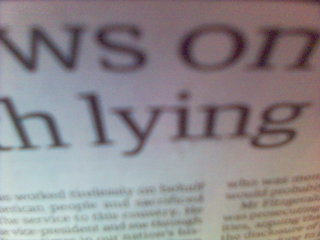Chapter 1.2: Critiquing The Statistics You Encounter
We live in a world filled with uncertainty and, in order to navigate the chaos, we need some way to make sense of the patterns. Statistics provides us with a set of tools and techniques that we can use to organize the chaos, describe the patterns, quantify the uncertainty, and make more informed decisions. There is a vast industry of statisticians, researchers, engineers, lobbyists and marketers constantly presenting us with data and their interpretations of those data, but often these analyses are faulty (at best) or purposely misleading (at worst). Our challenge is to act as an informed, data-literate populace to help separate the good from the bad in the statistics that are presented to us daily.

Background Materials:
Some other approaches to critiquing statistics:
A basic guide to spotting bad science:
http://www.compoundchem.com/2014/04/02/a-rough-guide-to-spotting-bad-science/
How to detect fake statistics:
http://www.statisticshowto.com/how-to-detect-fake-statistics/
Responsible Thinking Principles: http://www.truthpizza.org/logic/stats.htm
A step-by-step guide to critiquing quantitative research: http://www.unm.edu/~unmvclib/cascade/handouts/critiquingresearchpart1.pdf
Guidelines for critiquing research studies:
http://geekyartistlibrarian.pbworks.com/f/Quals+Sp+10+Critiqueguidlines_DC(2).pdf
These interesting websites are devoted to exposing bad statistics in journalism and research. There are lots of juicy examples updated regularly here:
http://www.stats.org/analysis/
http://www.badscience.net/category/statistics/
http://goodstatsbadstats.com/
Textbook References and Links:
Take the quiz found at the following website to see how you typically approach decision making: https://www.mindtools.com/pages/article/newTED_79.htm
Downloadable Data and Files:
Exercise 2: Beer Tax lowers Clap Article.pdf
Exercise 3: Beer Tax lowers Clap Rebuttal.pdf


